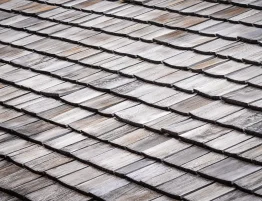
House hunting takes on a whole new challenge if you have a physical disability. Most homes are not built to accommodate your needs, making it difficult to find a residence where you can live comfortably and safely.
Seniors who want to continue to live in their homes as they age also face challenges with accessibility. Even though they want to stay in their home, living in a more accessible environment may be a safer option.
Fortunately, existing homes can be retrofitted to improve accessibility. When it comes to renovating homes to improve accessibility, four primary areas should be addressed.
1. Hardwood floors
Yes, natural hardwood floors are beautiful, but there are other benefits as well. First, they’re durable, easy to clean, and can easily be refinished to address any scruffs or marks. Next, they can be distressed or hand-scraped which gives the floor a custom look while making it less slippery. Finally, hardwood floors are easier to navigate using a wheelchair, crutches, or walker. A less expensive alternative to hardwood is vinyl plank flooring, which also offers protection water. If you really want carpet, opt for a low-pile variety with a thinner pad.
2. Showers and bathtubs
Showers and bathtubs create a barrier for people who use wheelchairs or have physical disabilities. That’s why roll-in showers are good options for accessible homes. These fixtures may also be called:zero-threshold showers, Roman showers, or wet rooms and allow entry to the shower area without encountering a barrier — a lip, a tub, a step, etc. An incline prevents water from spilling out into the bathroom. There are many ways to build a roll-in shower that looks attractive and sleek.
3. Open floor plan
Many older homes have narrow doorways and small, closed-off rooms. Newer homes tend to have more open floor plans which helps people with physical disabilities navigate the space. Open floor plans can also help those with hearing loss communicate better. Renovating a home so it’s more open will include things like rerouting wiring, removing non-load-bearing walls, and putting down seamless flooring. As part of the project, you may also need to lower counters and vanities and enlarge doorways to provide access to wheelchair users.
4. No barrier entrance
Removing entryway steps is a must when designing an accessible house. Doing so allows wheelchair users to access the house as well as people for whom stairs are a challenge. Eliminating entry barriers can be tricky in some cases and may require the use of ramps. Always include handrails on accessibility ramps.
It’s important to make homes safe and comfortable for people with physical disabilities. These renovations are a good place to start, but there may be other projects that would improve accessibility. Contact Diamond Hill Builders today to discuss your specific needs. We’ll work together to create the best renovation plan for your accessible home.








